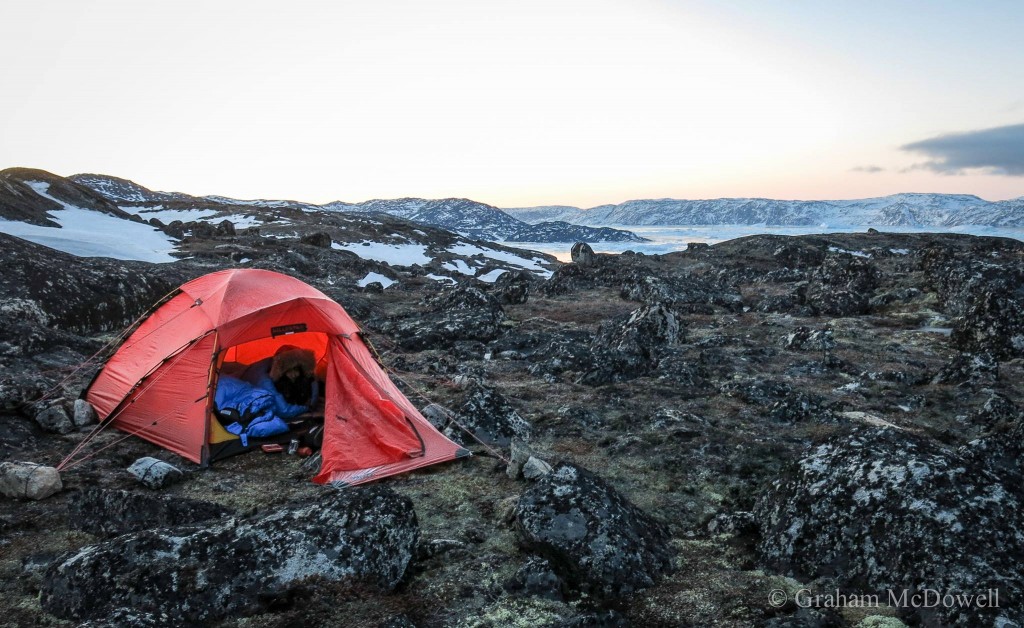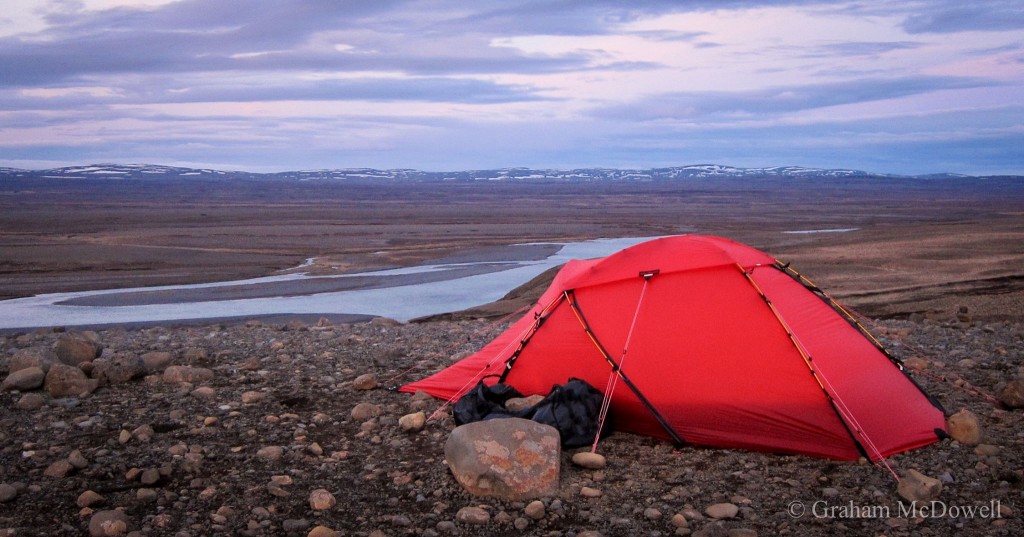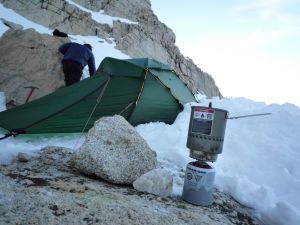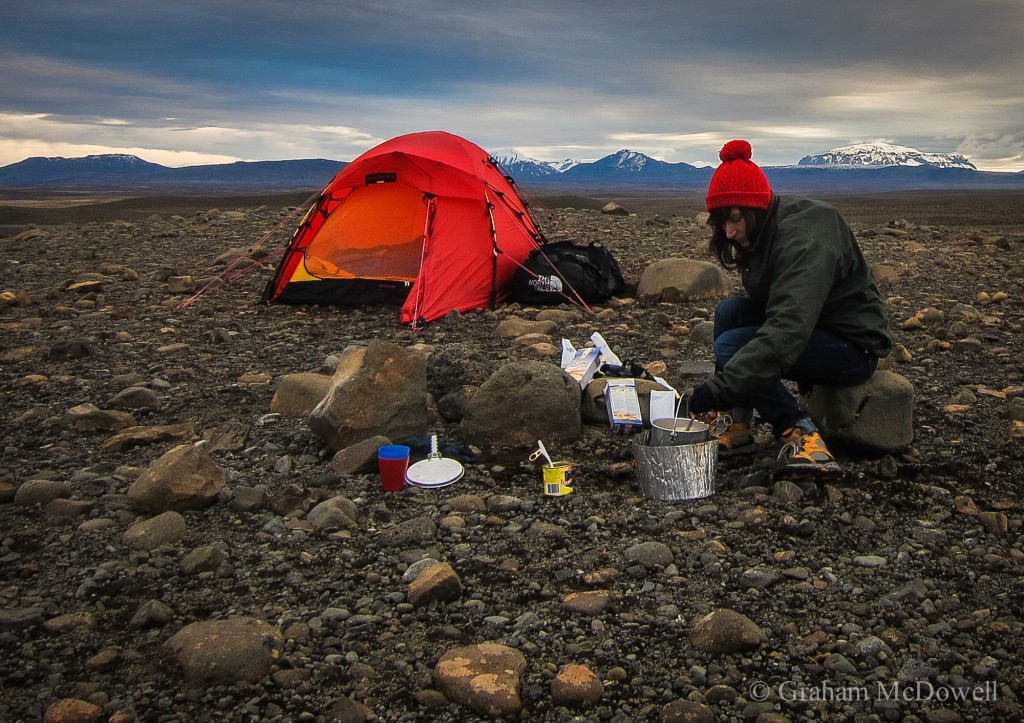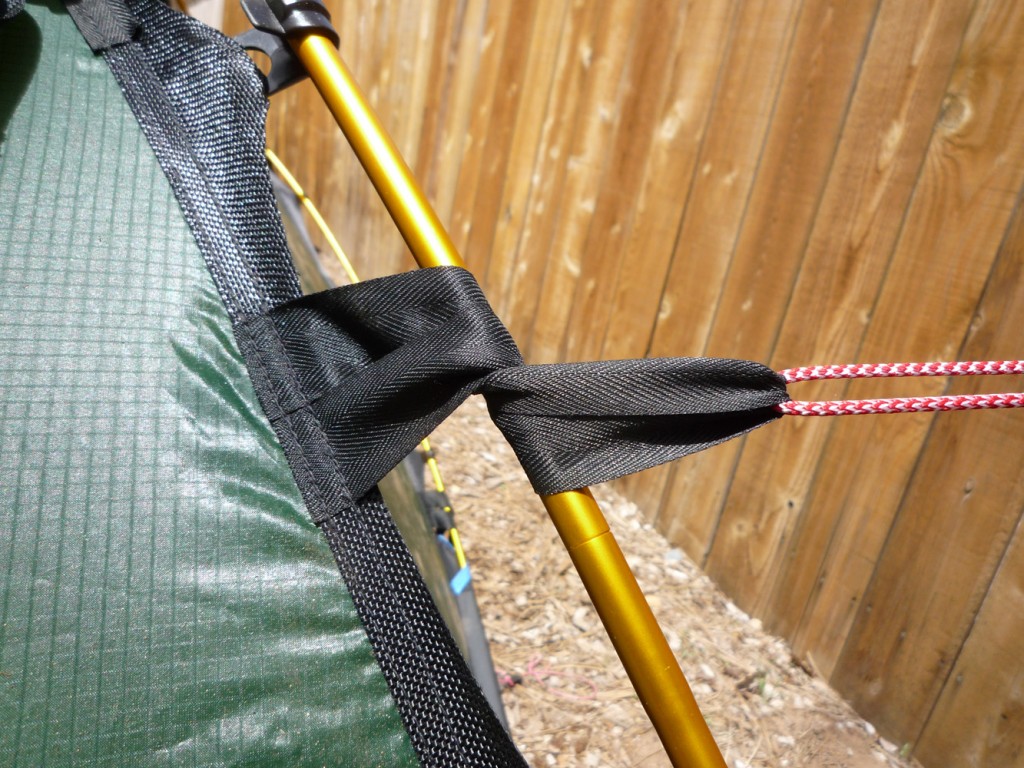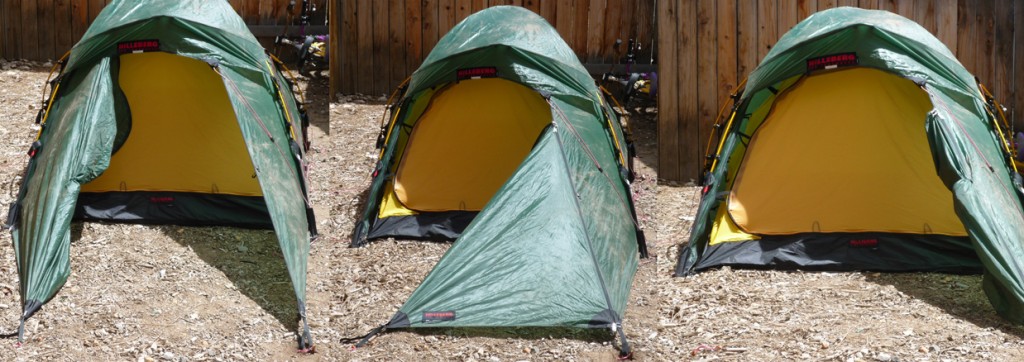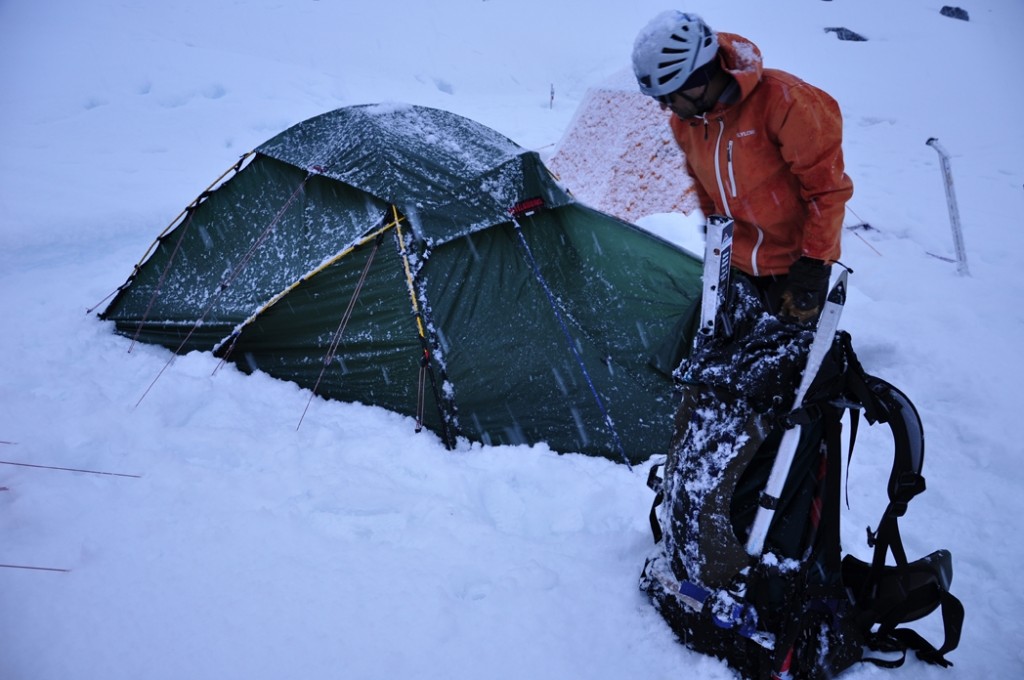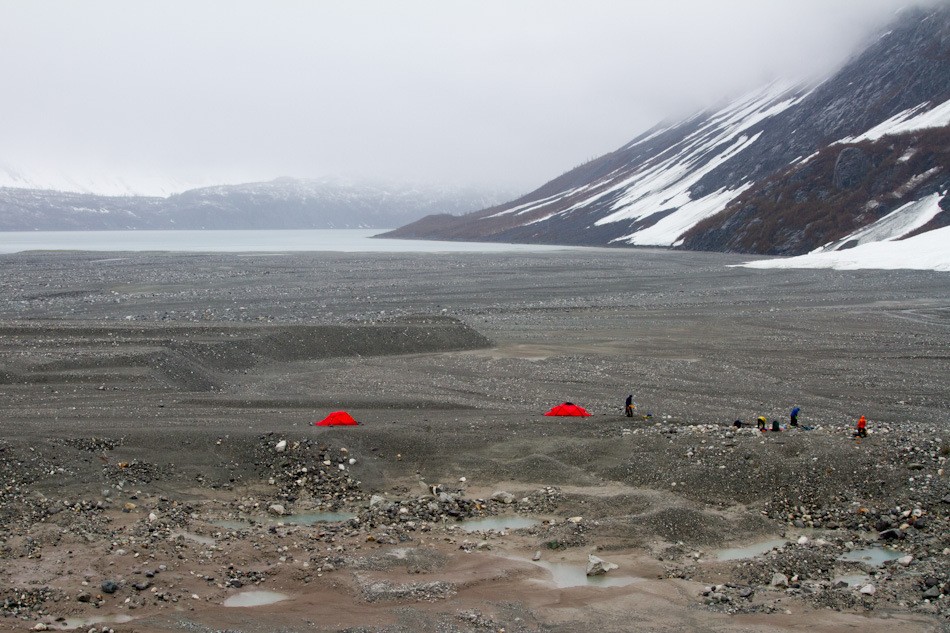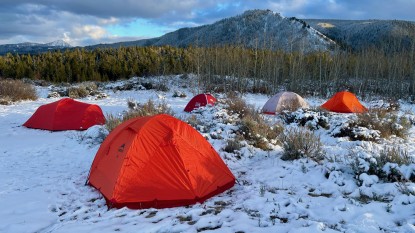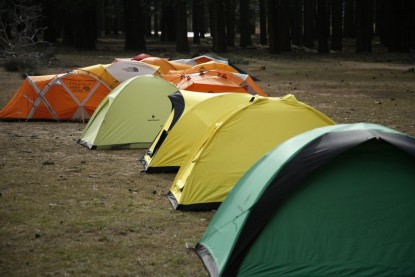Hilleberg Jannu Review
Our Verdict
Compare to Similar Products
 This Product
Hilleberg Jannu | |||||
|---|---|---|---|---|---|
| Awards | Best Double Wall 4-Season Tent | Best Ultralight Mid | Best Overall Value | Best Single Wall 4-Season Tent | Best for a Spacious Basecamp |
| Price | $1,240 List | $699.00 at Backcountry Compare at 2 sellers | $690 List $690.00 at REI | $1,100 List | $860 List $645.68 at Amazon |
Overall Score  |
|||||
| Star Rating | |||||
| Bottom Line | When you know you're in for crummy weather and want an exceptionally high performance model, choose this one | If you're looking for a simple, waterproof shelter, this one is ultralight and easy to pack | Not as expensive as some other models, this option is a popular choice to bring on climbing adventures | This ultralight 4-season, single-wall tent will keep you warm and dry even in severe conditions | Equally at home on extended expeditions or on summertime mountain adventures, this all-around model is versatile |
| Rating Categories | Hilleberg Jannu | Hyperlite Mountain... | The North Face Moun... | Samaya2.0 | MSR Remote 2 |
| Weather and Storm Resistance (30%) | |||||
| Ease of Use (30%) | |||||
| Weight (20%) | |||||
| Quality of Construction (10%) | |||||
| Versatility (10%) | |||||
| Specs | Hilleberg Jannu | Hyperlite Mountain... | The North Face Moun... | Samaya2.0 | MSR Remote 2 |
| Minimum Weight (only tent, fly, poles) | 6.17 lbs | 1.20 lbs (fly only, Ultamid Insert would add 1.4 more lbs) | 7.87 lbs | 2.94 lbs (no vestibule) | 6.97 lbs |
| Floor Dimensions | 93 x 57 in | 83 x 107 in | 86 x 54 in | 87 x 43 in | 87 x 55 in |
| Peak Height | 40 in | 64 in | 41 in | 39 in | 43 in |
| Measured weight (tent, stakes, guylines, pole bag, stuff sacks) | 6.87 lbs | 1.49 lbs (without insert/tent body, stakes, or pole) | 8.50 lbs | 3.61 lbs (without optional vestibule) | 7.13 lbs |
| Type | Double wall | Single wall | Double wall | Single wall | Double wall |
| Packed Size | 6 x 20 in | 8.5 x 6 x 5.5 in | 7 x 24 in | 6 x 8 in | 7 x 20 in |
| Floor Area | 34.5 sq ft | 63 sq ft | 32.0 sq ft | 26.9 sq ft | 33.0 sq ft |
| Vestibule Area | 13.0 sq ft | N/A | 11.0 sq ft | 20.5 sq ft (sold separately) | 22.0 sq ft |
| Number of Doors | 1 | 1 | 2 | 1 | 2 |
| Number of Poles | 3 | 0 (use own trekking poles strapped together or tent pole sold separately) | 4 | 3 | 2 (single spider takes place of two cross poles) |
| Pole Diameter | 9 mm | N/A | 9.5 - 13 mm | 8.7mm | 9.3 mm |
| Number of Pockets | Side: 4, ceiling: 0 | 0 | Side: 6, ceiling: 2 | Side: 1, ceiling 1 (removable) | Side: 2, ceiling: 0 |
| Pole Material | DAC Featherlite NSL Green | N/A | DAC Featherlite NSL | DAC Featherlite NFL | Easton Syclone |
| Rainfly Fabric | Kerlon 1200 | Dyneema composite (DCF 8) | 40D PU coated polyester | Nanovent 3-layer with removable Dyneema Composite roof cover | 68D ripstop polyester 1800mm polyurethane & DWR |
| Floor Fabric | 70D PU coated nylon | None | 70D PU coated nylon | Dyneema composite fabric | 40D ripstop nylon, 10,000mm Durashield polyurethane, DWR |
Our Analysis and Test Results
If we had to choose one strong four-season shelter for a wide range of trips and conditions, the Jannu stands out. It combines an excellent balance of versatility, comfort, and strength and brings a Denali or Himalayan level of stormworthiness. It doesn't boast the most headroom, nor is it as packable as other options, but our review team loved the easy-to-pitch design, various setup configurations, and top-notch ventilation options. If you aren't planning to camp in extreme weather, you could easily get away with a lighter, more compact shelter.
Performance Comparison
Weather and Storm Resistance
The Jannu is full-on expedition-worthy but weighs less than comparably strong models. This tent's web of intersecting poles makes it capable of handling severe snow loading and winds that batter it from all sides. In open areas, like big glaciers and polar regions, the wind tends to change little throughout the night. In high mountain conditions, wind patterns can be chaotic and unpredictable and, depending on your “campsite,” might demand a tent with a stronger sidewall.
This balance of extreme strength and decent weight makes the Jannu a fantastic option for both expeditions and alpine climbing. If you don't expect to encounter challenging four-season conditions in places like Denali or Antarctica, where the Jannu's extra strength might not be necessary, we might recommend a lighter-weight 4-season tent. The self-supporting design is an ideal choice for base camping if you leave the tent unattended and aren't there to remove snow from it or check on the tie-outs. The two most significant characteristics that make this tent viable for terrible conditions are the aggressive pole design and the use of top-tier fabrics.
The vestibule pole is commonly the first thing to break on many mountaineering tents. Once that pole snaps, the front of the tent can catch wind like a kite and damage other areas. Fortunately, the Jannu does not use an additional pole for the vestibule; it is much stronger and, as a result, less likely to break. This is another thing that makes the tent bomber; the low-profile shape allows wind to pass over it easily. Other models that are taller or larger catch more wind and require many more poles or heavier poles to provide the same amount of strength. You can also add another set of poles to bolster the Jannu's strength further, though we rarely felt this was necessary.
Fabrics are also world-class on the Jannu. It uses tip-top silicone-impregnated ripstop nylon with a 26.5-pound tear strength. This is the second strongest fabric used by Hilleberg. (You can find the strongest on Hilleberg “Black Label” tents like the Nammatj and Tarra.) Sturdy fabrics are essential because if they get punctured by something like a broken pole or a crampon, they are less likely to tear.
Many other features make this tent even stronger. Three ground straps keep the pole arcs at the right tension and height and can also be used as guylines. The guylines are a Spectra-polyester blend which do not absorb as much water as nylon. There is also a camming adjuster included so that you don't have to use a trucker's hitch to tension the guylines. Finally, the lines attach to the tent with a six-inch loop of webbing that can wrap around the pole once and transfer tension from the tie-out stitching to the entire pole; this, too, is a unique feature that we love.
Ease of Use
The Jannu is easy to pitch and takes four steps. (1) Stake out the base of the tent, (2) insert the poles into color-coded, two-foot-long sleeves, (3) snap the poles into alternating plastic clips, and (4) stake out the vestibules and guylines. Hilleberg uses a unique design where the poles are on the outside of the entire unit. The inner tent and the outer fly are connected via dozens of elasticized toggles. Both the inner and outer tents can be pitched by themselves.
The pitch-the-outside-first design is superior to traditional double-wall tents. It's easier for one person to set it up, and you can even keep your gloves on. Since you're not setting the inner tent up first without the fly, it won't get wet if it's raining or snowing out. Once you insert the poles into the sleeves, they stand up by themselves, so you don't have to awkwardly try to balance one pole while setting up another.
These details make the setup more straightforward than nearly every other double-wall dome tent we've tested. The difference is significant regardless of the conditions but becomes greater as the weather worsens. Two people can have the tent pitched and tied out in super-strong storm mode in under five minutes.
The Jannu is top-tier when it comes to strength for its weight. However, it is considerably smaller and less comfortable than many other two-person double-wall tents. The floor area of 34.5 square feet is undoubtedly larger than many tents. But this specification is somewhat deceiving because the low angle of the rear end and sides dramatically reduces interior volume. There is enough space to sit up in the front of the tent, but not in the rear. The 13-square-foot vestibule extends at a low angle above the door, providing storage space for gear or a small cooking area. Again, there is a tradeoff between strength and livability; a vestibule with a dedicated pole would increase comfort but decrease strength.
On the bright side, our testers love the vestibule's zipper design, which uses a continuous zipper. The zipper hits the ground in two places, making a significant arc. It starts at the lower-left corner by the front left pole and curves up, around, and back down to the front right guy point on the vestibule. There are multiple configurations for opening; the left side is best for getting in and out quickly, while the center is best for loading up gear or for periods of good weather.
Ventilation is a key component of tent design; this model provides the best ventilation of any tent with a similar pole design. It has a large customizable top vent with numerous possible configurations; the inner tent's vent has both a solid nylon and mesh cover, and the fly has a breathable solid nylon panel (not waterproof) above the inner tent's vent. Above that lies a large Kerlon 1200 cover with all zippers accessed from the inside.
The cover attaches with two toggles on one side and two hooks on the other, with the hooks allowing you to quickly remove the vent for setup and take down (to allow access to pole clips). The vent cover is substantial in size, and guys out on three sides. This provides excellent ventilation during adverse conditions and, when coupled with a partially open door, effectively combats condensation. All testers were very impressed with its superb ventilation.
Weight
While this tent is exceptionally strong for its weight, it's overkill for most people traveling in the mountains of the contiguous United States and Southern Canada. If you plan to travel in some fairly extreme environments and want something reasonable to carry for climbing in ranges like the Canadian Rockies, the Cascades, or the Tetons, then this fits the bill. However, if you are primarily traveling on shorter, less expedition-focused trips, you could certainly get away with something a lot lighter.
There are several ways to reduce the weight of the Jannu. The most significant is to use only the outer tent for a savings of 30.5 ounces. The next is to upgrade the stakes. The tent comes with 18 DAC V stakes, which are good quality but heavy all-purpose stakes. Upgrading your stakes to use less and then supplementing with sticks, rocks, logs, etc., for the guylines is a creative way to shave a non-insignificant amount of extra weight. When camping on snow, we like to use ice axes, skis, crampons, snowshoes, poles, and other things for stakes as well since we already have those things with us. Occasionally, we'll use a dedicated snow stake, such as the Hilleberg Snow and Sand Peg.
Quality of Construction
This model balances a tricky tradeoff between low weight and expedition durability. Our model has held up well after three years of use in the Lower 48, Alaska, and Greenland. To some extent, we are glad that Hilleberg does not use their toughest, heavier fabrics on the Jannu; it's already tough, and the low weight is critical.
The major factor that makes this award winner so durable is the use of top-tier silnylon fabrics. The polyurethane (PU) coated fly fabrics found on most other expedition tents are more susceptible to hydrolysis (chemical breakup of the coating) and last for far less time than silnylon. The Jannu has been proven on many epic expeditions worldwide, and we are confident that it is incredibly durable.
Versatility
The Jannu earns a high score in this category as it can be pitched in several ways and works well for a wide range of conditions and uses. You can remove the inner tent and just pitch the fly with the poles, leaving the body behind, which significantly increases versatility. Some of our testers like to remove the inner tent (saving 30.5 ounces) for shorter, fast and light trips in all seasons.
Should You Buy the Hilleberg Jannu?
The Jannu is our highest-rated double-wall tent, and no model can match its use for both expeditions and mountain ranges. We'd recommend it for high-altitude alpine climbing and mountaineering applications that demand the ultimate static strength; however, it's still light enough to be considered for summertime mountaineering. With that said, it's a little overkill if you're not planning to take it on adventures beyond summer mountaineering. For pure expedition use, we'd splurge on a bigger, more comfortable tent, but if weight is of concern on your expedition, this tent provides the strength without a loss to livability.
The Jannu is not cheap; in fact, it's one of the most expensive in our review. However, it offers exceptional value with its mega stormproof design and top-notch fabrics and materials. Very few models can provide the same combination of strength, versatility, and low weight that the Jannu can.
What Other 4-Season Tents Should You Consider?
If you need a less expensive option, we recommend checking out The North Face Mountain 25. We also highly recommend the Mountain Hardwear Trango 2 if you want to stick with an expedition-style tent. And if you need to stay light and want a single-wall design, check out the impressive Samaya2.0.







